What kind of battery is better: the pros and cons of iron,
The discussion about which batteries are better for central heating continues from the moment the technology itself appeared, although in fact there is no universal answer to the question put to the title. In different situations, different models have advantages, because you need to choose a radiator for a particular apartment with known heating parameters.
Below we look at the most popular varieties and analyze their strengths.
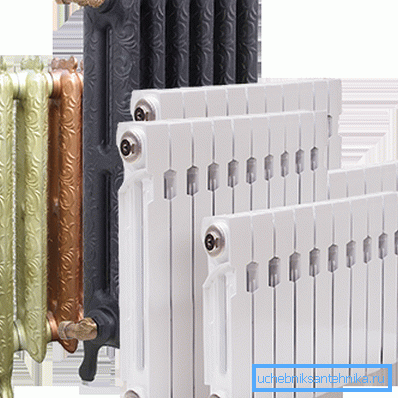
Battery types by material
A heating battery is a construction of pipes and tanks of various sizes, inside which coolant moves (most often - hot water). The configuration of the battery is chosen so as to increase the heat transfer - the redistribution of thermal energy from water to the ambient air.
To date, the heating of rooms used a variety of designs of radiators. However, one of the most important parameters determining operational characteristics is the material from which the device is made. The material affects the weight characteristics of the product (this is important in light frame structures), on the rate of heating and cooling, on durability and resistance to corrosion, etc.
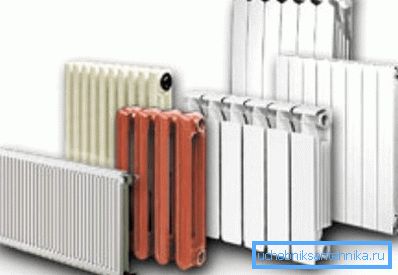
According to this parameter, such groups are distinguished:
- Cast iron - a type that has been used for over 100 years.
- Steel - lighter, but less durable.
- Aluminum- differ in the improved heat transfer.
- Copper - resistant to corrosion, effective, but quite expensive.
- Bimetallic –The most modern, combining the advantages of various types of radiators.
Below we look at what are the features of each of these varieties. So you can weigh the pros and cons to choose the best radiators for the apartment.
Operational features
Cast iron
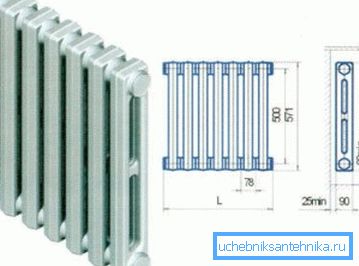
The first in our list will go to devices that are used almost as much as there is a centralized hot heating, namely, cast iron radiators.
- The main advantage of cast iron is its durability. Products made of this metal are practically not subject to corrosion, they do not lose their mechanical properties even after prolonged contact with hot water.
- Another plus of the material is the high heat capacity. Yes, the radiator wall is warming up for a long time, but it also gives off heat for as long.
Note! Such temperature inertness can lead to excessive fuel consumption for heating, because the instruction strongly recommends connecting autonomous boilers to the climate control system. So it will be possible to reduce the consumption of thermal energy due to the periodic disconnection of the heater.
- The price of cast iron batteries is also quite affordable. And if we consider that they are usually acquired once and for all, the investment becomes even more attractive.
- The disadvantages of this type include the already mentioned slow warm-up, a lot of weight (it’s very difficult to mount it yourself), as well as the rather primitive design of most models on the market. However, the latter problem is often solved by installing decorative screens.
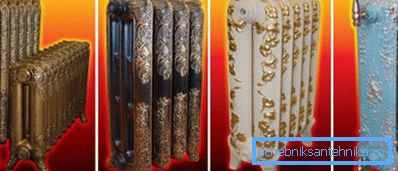
Steel
Steel, when used in heating systems, is seriously losing cast iron:
- First, the material is prone to corrosion, even when working with prepared and purified water. And if we recall that in many heating enterprises water treatment is conducted very conditionally or not at all, then one can imagine how badly the batteries will be worn out in a few years.
- Secondly, steel radiators do not tolerate hydraulic shocks. A short-term increase in pressure to 20-25 atmospheres can destroy the structure, ensuring the direct flow of large volumes of hot water into your apartment.
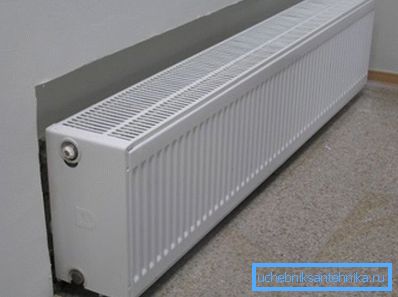
On the other hand, steel also has advantages:
- The material has a higher thermal conductivity, so that the room warms up much faster. True, it cools faster, because when the boiler is turned off, the comfortable temperature will last for a relatively short time.
- The cost of such batteries is lower, and the weight is less. For this reason, they are actively used for arranging the heating networks of public buildings.
Aluminum
Sectional aluminum batteries have appeared on the market relatively recently, but have already gained sufficient popularity.
Their advantages are:
- Low weight, reducing the load on the supporting structures and facilitating the installation of their own hands.
- Good heat dissipation, which together with low inertia provides effective heating of the room.
- Stylish design, which, however, is suitable only for modern interiors.
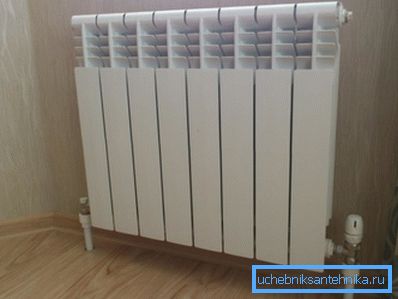
As for the shortcomings, they are as follows:
- The cost of aluminum radiators is quite high.
- When ingested with a weakly alkaline coolant, activation of corrosion processes is noted.
- It is difficult to ensure complete sealing of the joints, because periodically it is necessary to eliminate leaks.
And yet, recently, aluminum has been confidently pushing steel out of the market, especially where the most efficient heat transfer is needed.
Copper
Copper batteries are more exotic than a universal option. They cost quite expensive, and mechanical characteristics are inferior to more mass models.
On the other hand, copper heating batteries have several advantages:
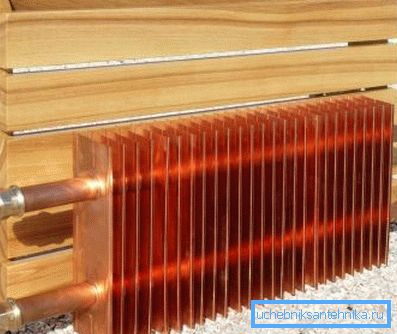
- First, they are made from seamless seamless pipes, which increases the system's resistance to pressure drops.
Note! The corrosion resistance of the material is ensured by the formation of a thin film of oxides on the inner surface of the pipes, so regular cleaning of radiators is not necessary!
- Secondly, copper is characterized by very high heat transfer (2 times higher than aluminum, and 5-6 times more than that of cast iron), because the rate of warming up the room will be simply impressive.
- Thirdly, a relatively small amount of water is inside the battery, which has a positive effect on the efficiency of the entire system.
Bimetallic products
Batteries, which are structures made of steel pipes and aluminum fins, designed for better heat dissipation, are called bimetallic:

- Such devices resist corrosion well and withstand a sufficiently high pressure in the system.
- Aluminum parts provide sufficient heat transfer.
- The design of the radiator itself contributes to the optimal redistribution of warm air, so that the room is heated as evenly as possible.
That is why bimetallic types are most often mentioned as the answer to the question which radiator is better. If it were not for their high cost and propensity for slagging, such products could be considered a universal solution for any apartment.
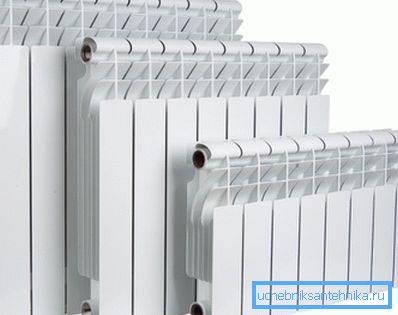
Conclusion
Deciding which heating batteries are better is needed only after careful analysis of the strengths and weaknesses of each of the options. That is why neither iron nor aluminum can be definitely recommended - it is important that the heating system maximally meets your requirements. The video provided in the article contains additional recommendations on the selection and installation of radiators, therefore we recommend that you carefully study it.